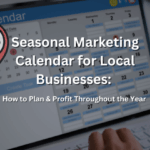The more you have in common with someone, the more they are interested in listening to you. And therefore the more receptive they will be in hearing what you have to say or sell.
Generally, people like people who are similar to them or share something that is the same. It could be any number of things:
- Same occupation
- Same school
- Fan of same sports team
- From the same city
- Know the same people
- Same religion
- Same nationality
- Same political orientation
The marketer or salesman can artificially create this feeling of closeness with the prospect or website visitor by finding some common ground, some shared reality or similarity.
How to use it?
The easiest and most natural way to use this is in one on one communication. But it can be employed in static text of web pages.
Live Communication
You start up a bit of small talk, and start fishing for something for which you and your prospect have in common. If you’re having trouble with this, you can use your surroundings, the environment and features about the prospect himself to find something. Perhaps you notice that he has a Mont Blanc pen, or Ray Ban glasses. You can then talk about these.
However, the easiest way to go about this is to simply ask what are their favorite things. For instance: “what is your favorite restaurant in this city?” “what is your favorite place you’ve travelled to?”, “who’s your favorite sports team?”. And then respond accordingly. With enough probing you can find something you are both enthusiastic about.
The best and strongest similarities would be the ones listed at the top (the list is not exhaustive however). Particularly religion and politics. Ironically these two topics are strenuously avoided (and for good reason). But, if one is a skillful enough communicator he could discuss religion or politics in a business setting, upset no one, and end up having them like him more.
Nothing in common?
If you can’t find anything in common with the person after some chatting around, you can use sincere compliments about them, their company, their achievements, their attitude, etc. Anything positive about them you should give a sincere compliment, and actually mean it.
Web Pages
Applying this to static web pages can be a bit tricky.
It is important to find this shared reality before sales talk/text begins, it oils the machinery so to speak.
For instance, if you have a landing page, and your audience is ‘people learning foreign language X’, you must put yourself in their shoes, and talk to them about their difficulties, their goals, their reasons for learning it, etc. And how you have had those exact same things, and that is why you developed your product ‘X’. It is personal, and real. This format can be brought into other spaces, not just foreign language.
If your audience is ‘DIY home owners’, you can also put yourself in their shoes and write about what is real to them, and then proceed to introduce your product and services, and explain how it will handle the things you described in your earlier text.
The ‘realer’ you can make yourself to your prospect, the more they can relate to you and see you as a person and not just another sales machine.






